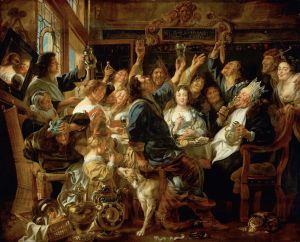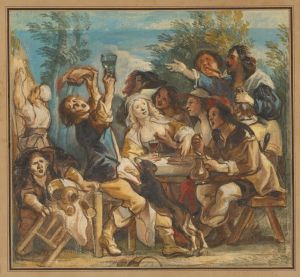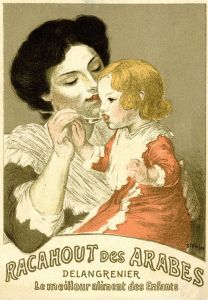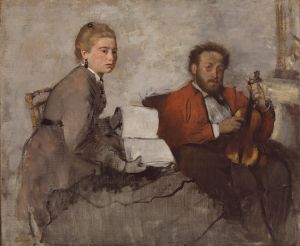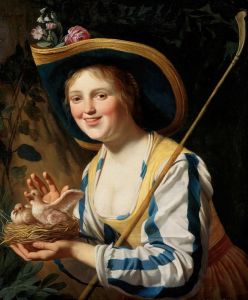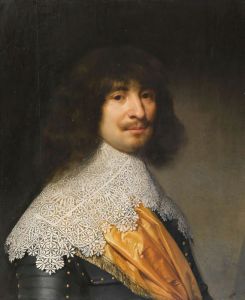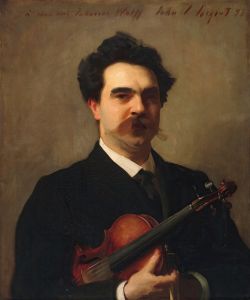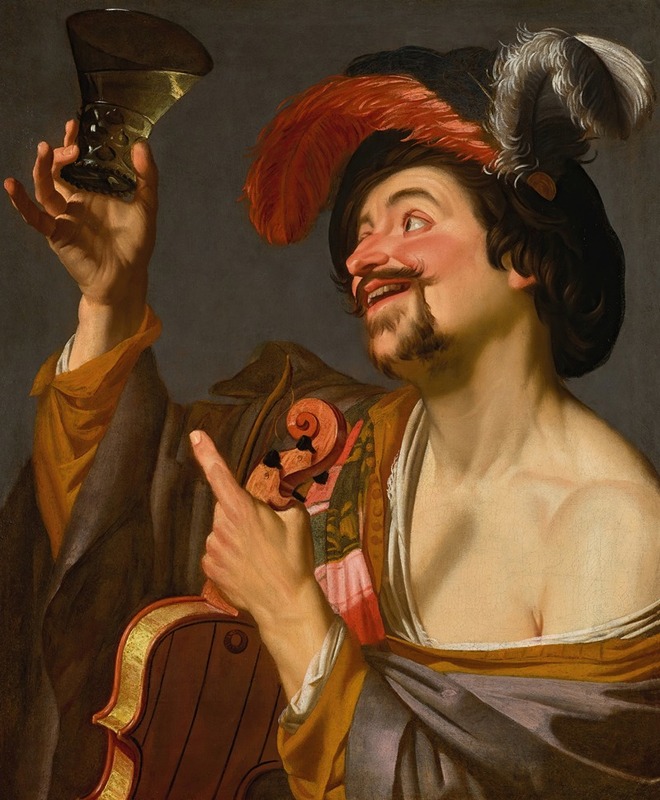
A merry violinist holding a roemer
A hand-painted replica of Gerard van Honthorst’s masterpiece A merry violinist holding a roemer, meticulously crafted by professional artists to capture the true essence of the original. Each piece is created with museum-quality canvas and rare mineral pigments, carefully painted by experienced artists with delicate brushstrokes and rich, layered colors to perfectly recreate the texture of the original artwork. Unlike machine-printed reproductions, this hand-painted version brings the painting to life, infused with the artist’s emotions and skill in every stroke. Whether for personal collection or home decoration, it instantly elevates the artistic atmosphere of any space.
"A Merry Violinist Holding a Roemer" is a painting by the Dutch Golden Age artist Gerard van Honthorst. Created around 1623, this work is a fine example of Honthorst's mastery in capturing lively, genre scenes with a strong use of chiaroscuro, a technique that emphasizes the contrast between light and dark.
Gerard van Honthorst (1592-1656) was a prominent painter from Utrecht, Netherlands. He was heavily influenced by the Italian Baroque painter Caravaggio, whose dramatic use of light and shadow left a significant impact on Honthorst's style. Honthorst is often associated with the Utrecht Caravaggisti, a group of artists who adopted Caravaggio's techniques and adapted them to their own works.
In "A Merry Violinist Holding a Roemer," Honthorst depicts a jovial musician holding a roemer, a type of German wine glass that was popular during the 17th century. The painting captures a moment of merriment and celebration, characteristic of many of Honthorst's genre scenes. The violinist, with a broad smile on his face, is illuminated by a strong light source, which highlights his expressive features and the intricate details of his clothing. The background is kept relatively dark, allowing the figure to stand out prominently.
The use of light in this painting is particularly noteworthy. Honthorst, often referred to as "Gherardo delle Notti" (Gerard of the Nights) due to his skillful depiction of nocturnal scenes, employs a single light source to create a dramatic effect. This technique not only adds depth to the composition but also draws the viewer's attention to the central figure and his joyous expression.
Honthorst's ability to convey emotion and atmosphere is evident in this work. The violinist's animated demeanor and the inclusion of the roemer suggest a scene of conviviality and enjoyment, themes that were popular in Dutch genre painting of the time. These scenes often depicted everyday life and were appreciated for their relatable subject matter and detailed execution.
The painting is also a testament to Honthorst's technical proficiency. The textures of the violinist's clothing, the glass of the roemer, and the musician's facial features are rendered with meticulous attention to detail. This level of craftsmanship is indicative of Honthorst's training and his dedication to his art.
"A Merry Violinist Holding a Roemer" is housed in the Rijksmuseum in Amsterdam, which holds an extensive collection of Dutch Golden Age paintings. The museum's collection provides valuable insights into the cultural and artistic achievements of the Netherlands during the 17th century.
In summary, "A Merry Violinist Holding a Roemer" by Gerard van Honthorst is a vibrant and skillfully executed painting that exemplifies the artist's talent for capturing light, emotion, and the essence of everyday life. It remains an important work within the context of Dutch Golden Age art and continues to be appreciated by audiences for its lively depiction and technical brilliance.





